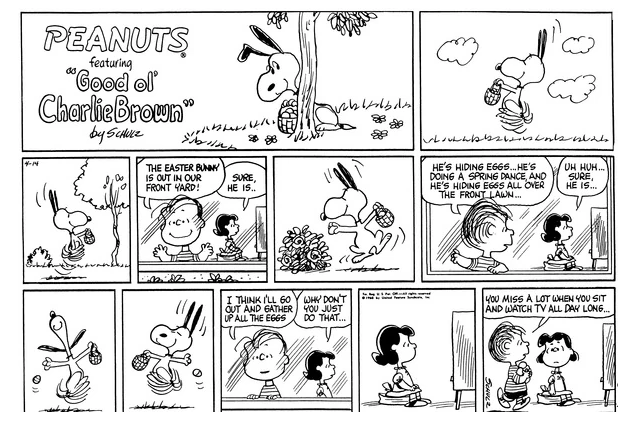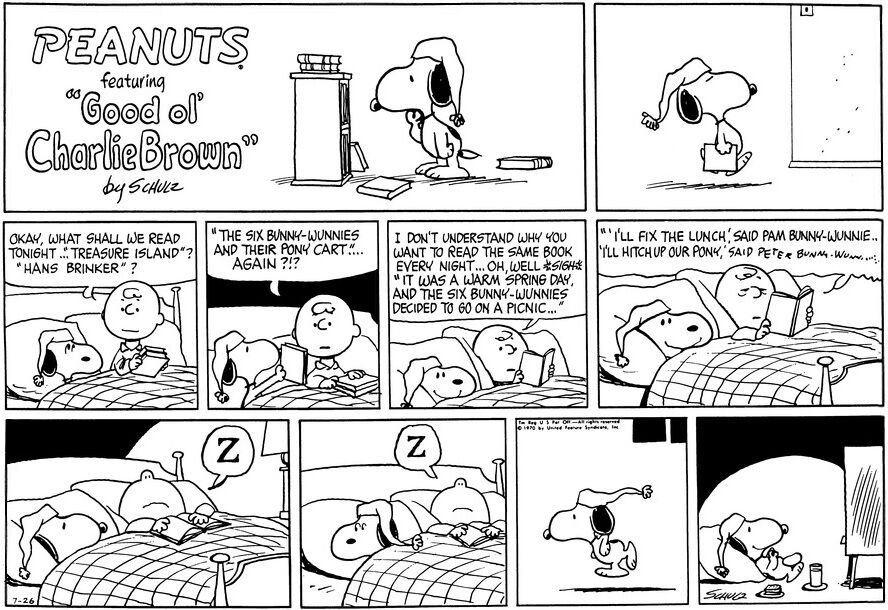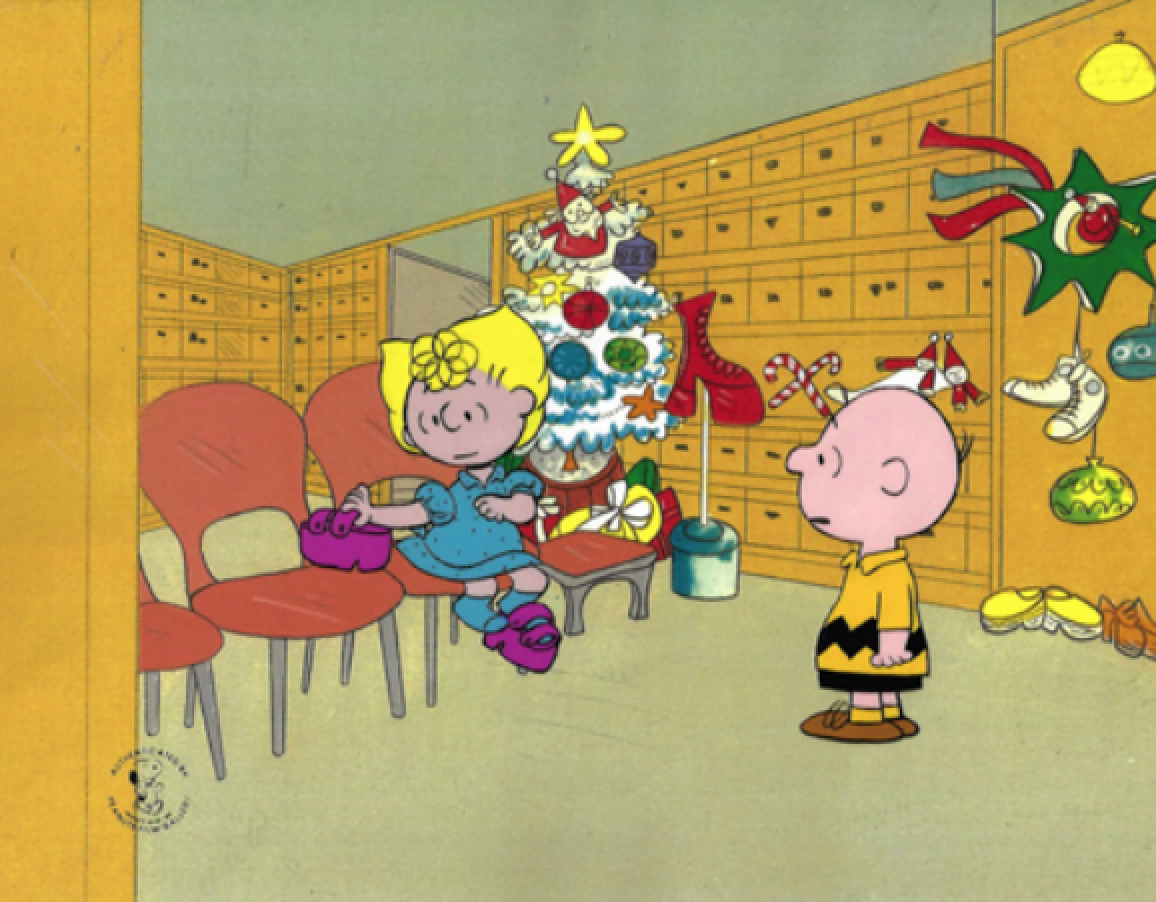If, like me, you’re a diehard fan of all things Peanuts and Charlie Brown animated specials, you’ve seen the 1974’s Emmy-nominated It’s the Easter Beagle, Charlie Brown!. When my friends at Bill Melendez Studios found some great art from the special, I thought it might be time to not only feature the art but talk about the history of the cartoon. The image of Snoopy bounding through the grass doing the happy dance and offering painted eggs to all the children of the neighborhood and frolicking with bunnies runs in my head on repeat this time of year.
Of course the origins of Easter are based in the pre-Judeo-Christian pagan worship of the Anglo-Saxon Goddess Oestre. As part of a festival dedicated to the renewal we see at Springtime, eggs, which represented the dawn of Spring, were buried and eaten. As with many other traditions adapted by Christian missionaries, Oestre was celebrated as a way of encouraging conversion. In this case, eggs were symbolic of the renewal through Christ’s resurrection, and new life given through the forgiveness of original sin.
Many pagans and Christians mark the holiday with Easter traditions like egg hunts, fancy hats and dress, and family gatherings for a feast. In Catholicism, that feast means the first time many can eat and drink what they gave up for Lent, which originally included eggs, because dairy products weren’t eaten during Lent. Many give up wine and chocolate (or alcohol and sweets, if you prefer), and Easter is the first time they can indulge in these delights! In the US and Europe, that’s partly why there’s so much chocolate that has made its way into Easter celebrations.
Painted eggs have been traced back over 2500 years, when the ancient Persians painted them for Nowruz, the Persian New Year. In the 12th century, England’s King Edward I gave over 450 eggs painted with gold leaf to his relatives during the Spring season. In 17th century Germany, gifts to children and Easter egg hunts became popular. Queen Victoria popularized the tradition by having egg hunts and filling artificial eggs with candy for the children. The US got into the spirit by having its first Easter egg roll in 1878, during the presidency of Rutherford B Hayes. Interestingly, though the Easter egg roll was meant to be secular, some imbued it with the symbolism of the rock being rolled away from Jesus’ tomb, allowing followers to see he had been resurrected.
Cut to Peanuts and Charles Schulz. As is clear from A Charlie Brown Christmas, Schulz was Christian. His faith and spirituality had a big impact on his work from the beginning. As examined in Stephen J Lind’s book “A Charlie Brown Religion: Exploring the Spiritual Life and Work of Charles M. Schulz”, more than 560 of his Peanuts strip contain a spiritual, theological, or religious reference, with 40 that directly mentioned prayer. His first animated special in 1965 explored ‘the true meaning of Christmas’, with Linus famously quoting from the bible, a rarity for a primetime cartoon special. One of the beauties of the Peanuts strip and of its creator is he believed there were many paths to the sacred, including many outside the Christian faith. He also valued joy and kindness, and showed it through is characters and stories, especially those involving Snoopy and Charlie Brown. So it makes sense that in 1968, he introduced another of Snoopy’s alter egos, The Easter Beagle.
His first appearance in the strip was April 14th, 1968, but it wasn’t until April 11th, 1971 that he was called The Easter Beagle:



The strips that made up the story of the Easter Beagle is what they used to construct the 1974 cartoon, which was the 12th Peanuts animated tv special, and the 4th to commemorate a holiday. It was first broadcast on April 9th, 1974.
If you know the special, you know there’s a scene where Snoopy dances, holding the paws with a circle of bunnies. Those bunnies are based on the Snoopy’s favorite (fictional) storybook series, “The Bunny Wunnies”, written by Miss Helen Sweetstory. They were first introduced on July 26th, 1970.

Here he is in the special. No, I haven’t seen any cels of these sweeties in about 20 years, but that doesn’t stop me from loving it onscreen and continuing my search for them!
Notice in the above scene, when he approaches the Bunny Wunnies, he happily shouts, “Hey!” It is one of the only times Snoopy ever speaks in a cartoon.
One of the most joyful sequences in all of animation, here’s Snoopy delivering painted eggs as the Easter Beagle. The music that accompanies him is not by part of the score Vince Guaraldi created for the special. It is the Allegretto from Beethoven’s 7th Symphony in A Major.
We got a small and very wonderful selection of original production cels from It’s the Easter Beagle Charlie Brown to sell from the Bill Melendez Studio. You can find some of them in the above clip! If you love It’s the Easter Beagle Charlie Brown, seek out these images before they sell. You can find them all now on our site for a limited time, at a special Easter price, HERE.








All of this is to say, this time of year is a time of celebration. I’m writing this blog during the Pink Full Moon, which for pagans is a big deal, and also a time of renewal and new life. For Muslims, Ramadan has been going on since April 1st, and will continue through to May. Whether you are pagan, Christian, Jewish, Muslim, a secular humanist, or atheist that just loves Snoopy dancing with bunnies, may you find joy in your weekend safely, and perhaps even with the aid of Snoopy as the Easter Beagle in this timeless Peanuts classic cartoon.
You can watch It’s the Easter Beagle Charlie Brown on Apple TV. While you’re there, check out the new Peanuts special, just released on April 15th, created in commemoration of Earth Month and in time for Earth Day. The cartoon features a charming new song by Ben Folds, part of which you can hear Sally singing in the trailer:

